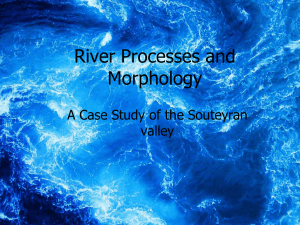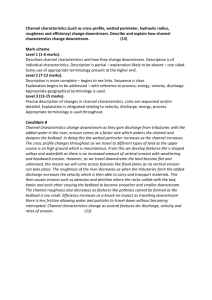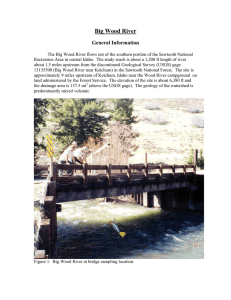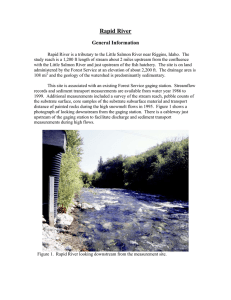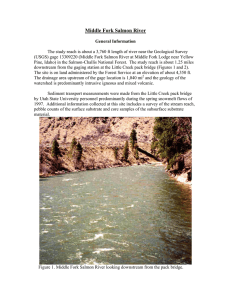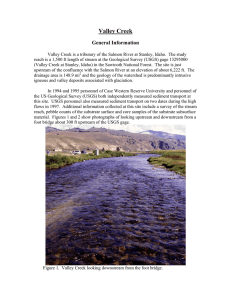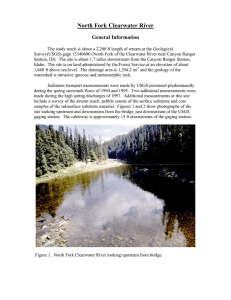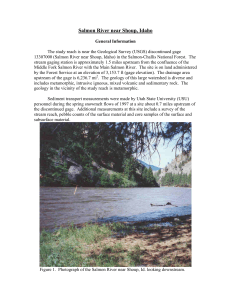River Study Introduction
advertisement
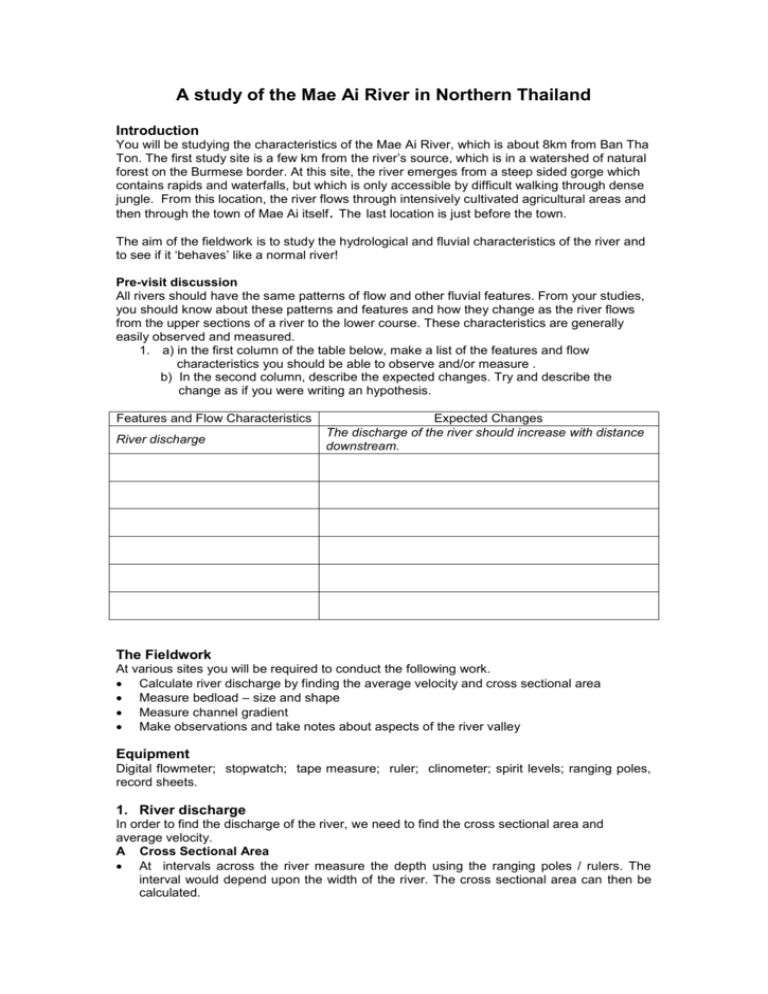
A study of the Mae Ai River in Northern Thailand Introduction You will be studying the characteristics of the Mae Ai River, which is about 8km from Ban Tha Ton. The first study site is a few km from the river’s source, which is in a watershed of natural forest on the Burmese border. At this site, the river emerges from a steep sided gorge which contains rapids and waterfalls, but which is only accessible by difficult walking through dense jungle. From this location, the river flows through intensively cultivated agricultural areas and then through the town of Mae Ai itself. The last location is just before the town. The aim of the fieldwork is to study the hydrological and fluvial characteristics of the river and to see if it ‘behaves’ like a normal river! Pre-visit discussion All rivers should have the same patterns of flow and other fluvial features. From your studies, you should know about these patterns and features and how they change as the river flows from the upper sections of a river to the lower course. These characteristics are generally easily observed and measured. 1. a) in the first column of the table below, make a list of the features and flow characteristics you should be able to observe and/or measure . b) In the second column, describe the expected changes. Try and describe the change as if you were writing an hypothesis. Features and Flow Characteristics River discharge Expected Changes The discharge of the river should increase with distance downstream. The Fieldwork At various sites you will be required to conduct the following work. Calculate river discharge by finding the average velocity and cross sectional area Measure bedload – size and shape Measure channel gradient Make observations and take notes about aspects of the river valley Equipment Digital flowmeter; stopwatch; tape measure; ruler; clinometer; spirit levels; ranging poles, record sheets. 1. River discharge In order to find the discharge of the river, we need to find the cross sectional area and average velocity. A Cross Sectional Area At intervals across the river measure the depth using the ranging poles / rulers. The interval would depend upon the width of the river. The cross sectional area can then be calculated. B Velocity Calculate the average velocity of the river using the ‘flowmeter’ devices. Carry out measurements at several places across the river – the number of places will depend on the width of the river. Time the number of revolutions over a 60-second period and use the formula to calculate the velocity. Use the data for the cross sectional area to calculate the average discharge, using the formula provided for you on the Discharge Data Sheet. 2. River gradient Use ranging poles, tape measures, spirit levels and a clinometer, measurements over 5 to 10 metre units. take several gradient 3. Bedload characteristics You should select 10 bedload samples. This can be done with a ‘systematic-random’ method. This is done by laying the tape measure along the river channel from one side to the other to a length of about 10 metres. At metre intervals, ‘blindly’ select a bedload sample. Measure their long and short axis and note their shape using the Power’s Scale of Roundness. 4. Observations At each location, it is important to note down features of the valley (size, shape of the valley floor and valley sides etc) and the river (take photos of course) and also to make notes about other features such as vegetation Follow up work A large number of calculations will need to be carried out to find out downstream changes in a) velocity b) cross sectional area c) discharge d) gradient e) bedload. These findings can be graphed, changes observed and hypotheses looked at again to see if they were correct or not.

